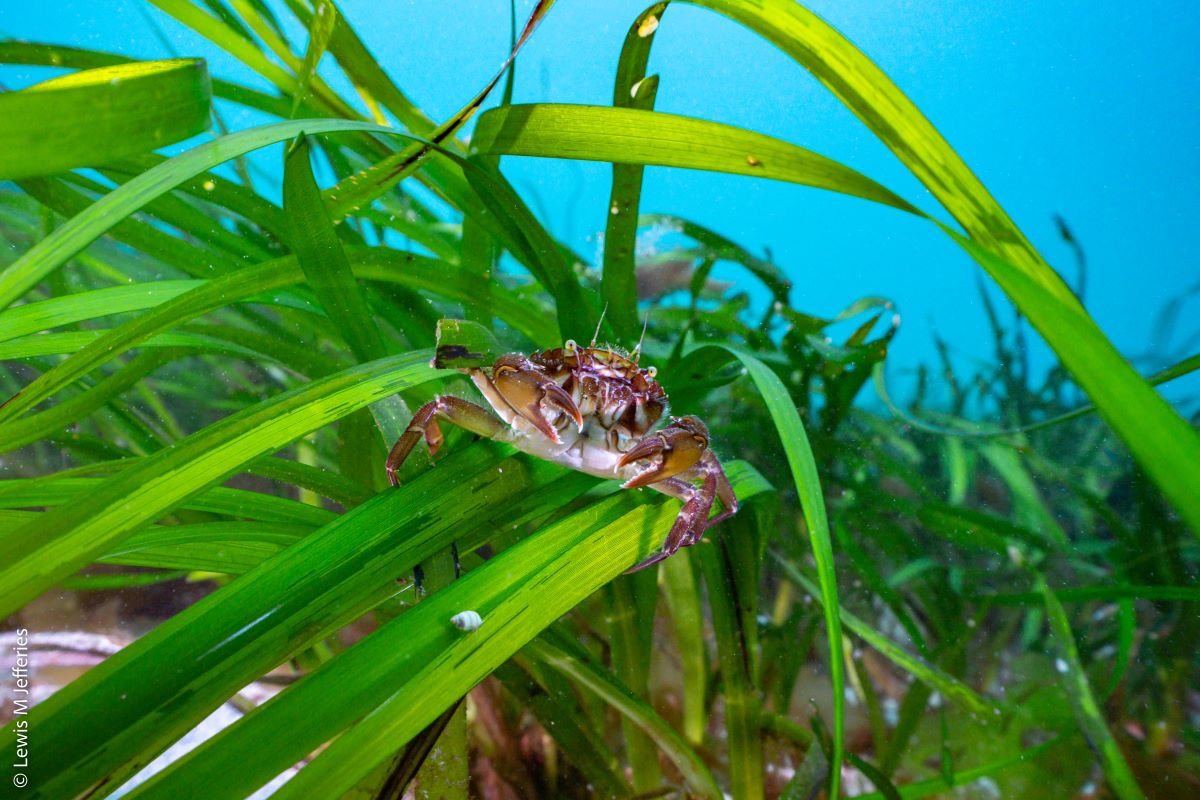‘Carbon code’ for Seagrass Restoration and UK Coastal Resilience

A new report by NbSI, Seascape Ecology Lab, Blue Marine Foundation and Project Seagrass, calls for a UK-Specific Seagrass Carbon Code to harness the potential benefits of carbon offsetting and ecosystem restoration.
Seagrass meadows play a crucial role in supporting biodiversity, improving water quality, protecting shorelines, and sequestering carbon. However, habitat loss estimates indicate that up to 92% of seagrass has been lost in the UK compared to historic levels. Human-induced stressors such as coastal development, dredging, fishing practices, poor water quality, and nutrient enrichment have contributed significantly to this decline.
This recently released scientific report, a collaboration by Project Seagrass, Blue Marine Foundation, the Seascape Ecology Lab, NbSI, and the Agile Initiative, highlights the importance of seagrass restoration and protection projects in the context of nature-based solutions for climate change mitigation.
Although the UK seagrass restoration projects were only first implemented in 2019, there are now many ongoing initiatives and projects occurring. However, while globally applicable carbon codes for seagrass exist, there is currently no UK-specific code in place. Whilst examples in other regions indicate that seagrass could absorb carbon up to 10 times faster than forests, no published UK data currently exists. Emphasising the need for further research as conservationists aim to tackle the decline of these valuable ecosystems.
Developing a UK seagrass carbon code would enable an integrated approach to restoration and ecosystem recovery, aligning with other habitat-specific codes. This report emphasizes a particular need for better data on seagrass spatial extent and condition, as well as on net carbon sequestration, and restoration outcomes. The authors emphasize the importance of conducting pilot projects to collect in-situ data on carbon fluxes and other greenhouse gas emissions associated with seagrass restoration. Such data collection will enhance the accuracy of carbon offset calculations and contribute to the long-term success of seagrass carbon projects.
“We have a good scientific understanding of how seagrass recovery and protection can act as a nature-based solution to provide a range of benefits, from climate change mitigation and adaptation to supporting fish populations. There is still a lack of detail on exactly what carbon sequestration might be provided in coasts around the UK, however, and the best way to restore seagrass meadows. Developing a ‘seagrass carbon code’ could provide an impetus and rigorous framework to address these knowledge gaps, and then help realise the potential for restoring this important habitat.” – John Lynch, NbSI
Leveraging carbon markets to support seagrass restoration and conservation efforts presents a viable way to protect these valuable ecosystems, with data collection crucial to unlocking these finance mechanisms. Carbon markets offer funding opportunities for nature-based solutions, including habitat restoration and protection. By linking projects to carbon credits, particularly those associated with relevant industries such as shipping or maritime activities, additional restoration funding can be secured for areas affected most. However, this report highlights that the majority of current funding from carbon credits is directed towards tree-planting initiatives, with limited focus on biodiversity and resilience.
This report calls for the establishment of a UK seagrass carbon code, which would channel the growing interest in carbon credit programmes towards seagrass restoration projects. It would also provide a necessary framework to accurately measure and verify carbon sequestration, ensuring that the generated carbon credits meet high-quality standards. Authors recommend that a code would incorporate key sustainability principles, including those defined by the IUCN Global Nature-based Solutions Standard and the “High-Quality Blue Carbon Principles and Guidance.” Collaboration between multiple agencies, organizations, and public bodies is also crucial, to share data and learning, on both a national and global scale.
“Leveraging carbon markets for seagrass restoration and conservation could play a significant role in protecting these threatened ecosystems, and so doing build our resilience to climate change impacts and protect biodiversity. But to enable this we urgently need a robust UK seagrass carbon code to ensure accurate measurement and high-quality standards. This in turn necessitates researchers, policy makers and practitioners to collaborate, share data and drive an integrated nationwide and global approach.” Nathalie Seddon, Prof of Biodiversity and Director of the Nature-based Solutions and Agile Initiatives at the University of Oxford.




